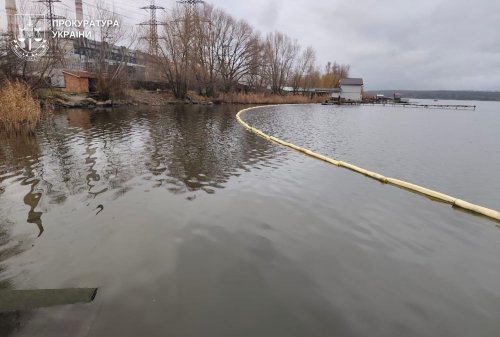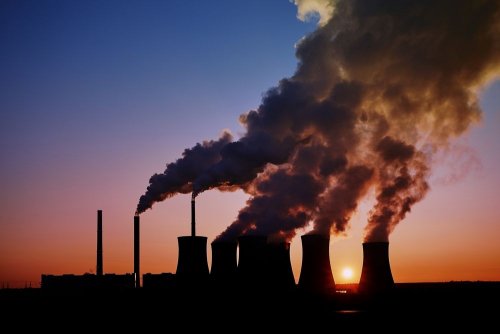The Ministry of Environmental Protection and Natural Resources of Ukraine did not take into account a significant part of the proposals and comments received from stakeholders during the discussion of Ukraine's new Nationally Determined Contribution (NDC2) to the Paris Climate Agreement.
The report on the results of electronic public consultations on the draft resolution of the Cabinet of Ministers of Ukraine “On the Approval of Ukraine's Second Nationally Determined Contribution to the Paris Agreement” is available on the ministry's website.
The document is 252 pages long and contains responses to proposals from 32 interested parties – organizations and citizens. EcoPolitic has analyzed them systematically.
Representatives of the business community
The first on the list are responses to proposals and comments from the European Business Association (EBA) and the joint representative body of employers at the national level (the Federation of Employers of Ukraine (FEU) – ed.). Each of these organizations submitted two proposals, one of which was taken into account by the ministry, while the others were rejected.
Thus, the Ministry of Environment refused the FEU's proposal to set a target of reducing greenhouse gas emissions to 65.1% of 1990 levels and to revisit this issue three years after the end of the war. Similarly, a broader proposal from the EBA to consider revising Ukraine's climate commitments downward, taking into account the conditions of martial law and economic realities, was also rejected.
The justification for this refusal seems somewhat surprising: the ministry explained that during the public discussion process, a number of public organizations and associations of public organizations submitted proposals to increase the ambition of the NDC2 target.
“Thus, in order to take into account the proposals of various interested parties, the NDC2 target within the draft act is set within the range of ‘Reducing total greenhouse gas emissions, taking into account absorption, by 68-73% from 1990 levels by 2035,’” summarized the Ministry of Environment.
In other words, the agency considers equally important:
- the position of business representatives who have conducted thorough analytical research to support their proposal and know firsthand about the situation with industrial production and the economy;
- the position of civil society activists, who use arguments such as “our emissions have already decreased significantly, so let's not stop there.”
And the fact that this “decarbonization” has essentially occurred through deindustrialization seems to bother no one except industrialists.
Instead, the ministry took into account the business community's proposal to possibly review climate goals three years after the war ends, as well as to start working on giving Ukrainian companies access to European funding, especially decarbonization funds.
Citizens
The document is followed by a large stack of identical proposals from citizens, each consisting of three points:
- to increase the target for reducing greenhouse gas emissions to one that would mean a real reduction compared to current figures;“According to the Ministry of Environment, the target set in the NDC draft has already been achieved in 2023,” the applicants claim.
- supplement the text of the NDC with climate change adaptation targets;
- define a clear plan for phasing out or reforming carbon-intensive sectors of the economy, as well as a plan to mitigate the potential impact of these measures on communities and communities dependent on these sectors, in accordance with the principles of just transition.
The ministry took into account only the second proposal, rejecting the first and third.
Civil society organizations
Only three CSOs submitted their comments and proposals on the NDC2: Ecodia, the Ukrainian Climate Network, and the Ukrainian Zero Waste Alliance. There are quite a few recommendations from activists. Sometimes they are purely formal in nature, but there are also more substantial and fundamental ones.
For example, civil society organizations propose setting a target to reduce greenhouse gas emissions by 76-80% from 1990 levels by 2035. Based on data from the National Report on the Inventory of Greenhouse Gas Emissions and Their Removal by Sinks in Ukraine for 1990-2023, environmental activists say that greenhouse gas emissions in 2023 have been reduced by almost 76%.
“Given this reduction as of 2023, the target of a 68-73% reduction in the NDC by 2035 is actually a target for an increase in greenhouse gas emissions,” they believe.
But, again, they either do not realize or deliberately ignore the fact that the significant reduction in emissions was due to deindustrialization as a result of the full-scale invasion and the difficult economic situation in Ukraine.
As another argument in favor of setting a more ambitious NDC2, activists cite Ukraine's European integration aspirations.
“Given that Ukraine is striving to become part of the EU, it is important to take into account the dynamics of the European Union’s climate goals. In particular, the European Commission has set a target of reducing net greenhouse gas emissions by 90% compared to 1990 levels, which is in line with the latest scientific findings. This creates an additional benchmark for Ukraine in setting its own target for 2040," the NGO believes.
At the same time, representatives of public organizations do not take into account two very important factors. First, in order to achieve its ambitious climate goals, the EU allocates significant financial resources on an ongoing basis through several funds to help European manufacturers decarbonize. Second, fierce debates have been going on for months in the European Union itself regarding the setting of a target of a 90% reduction in emissions by 2040. And more and more countries are refusing to support such an ambitious goal.
What about scientific modeling?
It is also worth noting that the Ministry of Environment has never, when rejecting a proposal, cited the results of scientific scenario modeling of greenhouse gas emissions dynamics in Ukraine, which have been repeatedly presented to the public, as justification. In other words, it currently appears that the ministry took the most modest proposal from industrialists (65.1%) and the most ambitious from environmental activists (76-80%) and decided to set a target somewhere in the middle, without relying on specific figures, facts, and analysis of the current situation.
We would like to remind you that earlier, EBA experts analyzed the challenges and ways to address them when setting Ukraine's NDC2.





